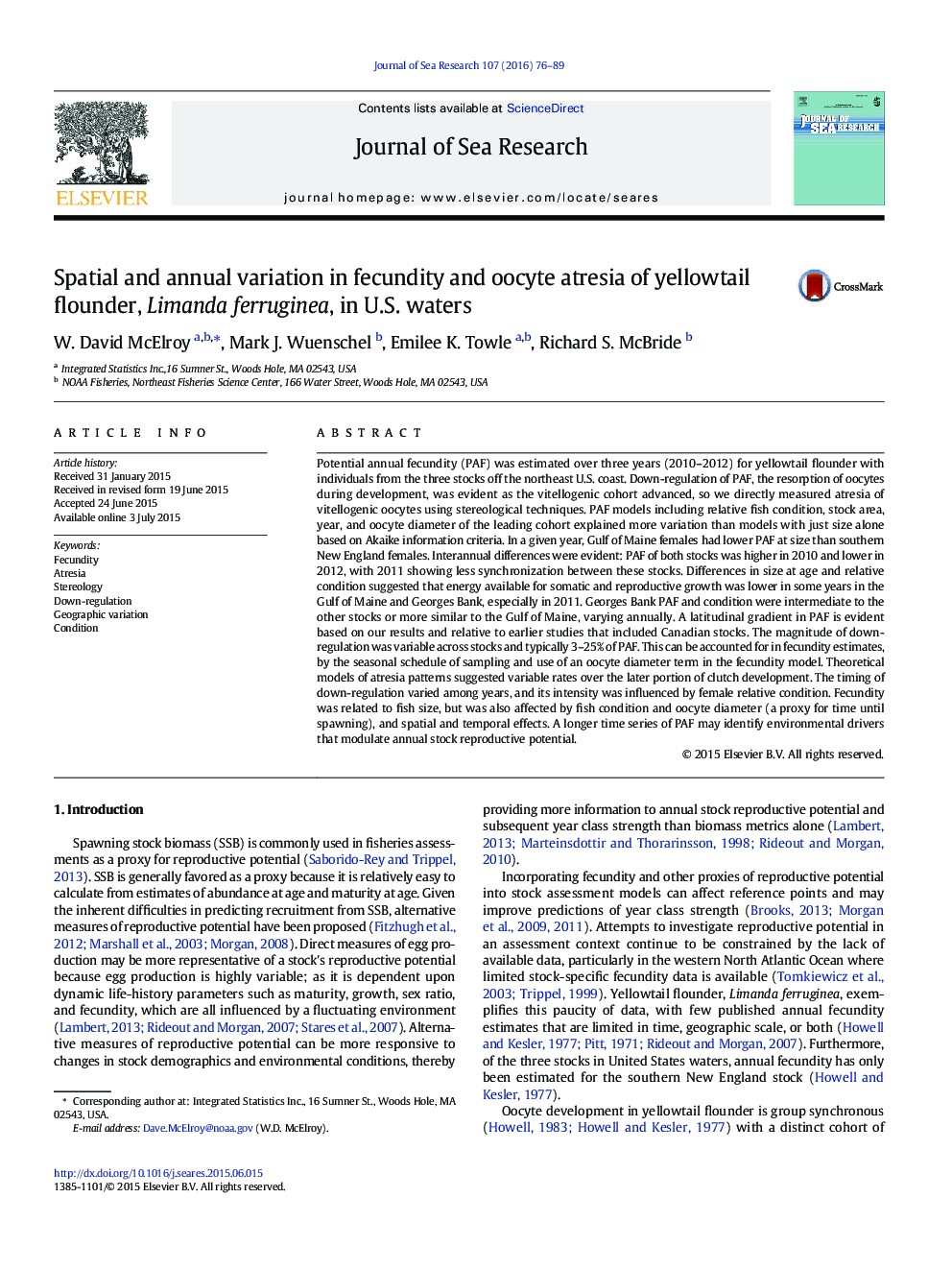| کد مقاله | کد نشریه | سال انتشار | مقاله انگلیسی | نسخه تمام متن |
|---|---|---|---|---|
| 4549639 | 1328088 | 2016 | 14 صفحه PDF | دانلود رایگان |

• Positive allometry in fecundity at female size was evident.
• Southern New England fish had higher fecundity at size than Gulf of Maine fish.
• Down-regulation of fecundity was common and annual stock level estimates were 3–25%.
• Atretic intensity was variable among stocks and years and related to fish condition.
• A theoretical model of down-regulation was found to be consistent with observed data.
Potential annual fecundity (PAF) was estimated over three years (2010–2012) for yellowtail flounder with individuals from the three stocks off the northeast U.S. coast. Down-regulation of PAF, the resorption of oocytes during development, was evident as the vitellogenic cohort advanced, so we directly measured atresia of vitellogenic oocytes using stereological techniques. PAF models including relative fish condition, stock area, year, and oocyte diameter of the leading cohort explained more variation than models with just size alone based on Akaike information criteria. In a given year, Gulf of Maine females had lower PAF at size than southern New England females. Interannual differences were evident: PAF of both stocks was higher in 2010 and lower in 2012, with 2011 showing less synchronization between these stocks. Differences in size at age and relative condition suggested that energy available for somatic and reproductive growth was lower in some years in the Gulf of Maine and Georges Bank, especially in 2011. Georges Bank PAF and condition were intermediate to the other stocks or more similar to the Gulf of Maine, varying annually. A latitudinal gradient in PAF is evident based on our results and relative to earlier studies that included Canadian stocks. The magnitude of down-regulation was variable across stocks and typically 3–25% of PAF. This can be accounted for in fecundity estimates, by the seasonal schedule of sampling and use of an oocyte diameter term in the fecundity model. Theoretical models of atresia patterns suggested variable rates over the later portion of clutch development. The timing of down-regulation varied among years, and its intensity was influenced by female relative condition. Fecundity was related to fish size, but was also affected by fish condition and oocyte diameter (a proxy for time until spawning), and spatial and temporal effects. A longer time series of PAF may identify environmental drivers that modulate annual stock reproductive potential.
Yellowtail flounder potential annual fecundity (PAF) relative to total length (TL, left column) and fish age (FA, right column) by year and stock (on a log-log scale). GB regression is for all years combined. Lines are predicted PAF at length or age with terms for mean oocyte diameter of the leading cohort = 500 μm and relative condition = 1.0 (‘average condition’). Ages jittered to reduce over-plotting. Rare lengths (TL < 300 mm or TL > 500 mm) and ages (FA = 2) were excluded from regression calculations (circled, n = 10).Figure optionsDownload as PowerPoint slide
Journal: Journal of Sea Research - Volume 107, Part 1, January 2016, Pages 76–89